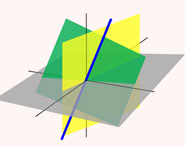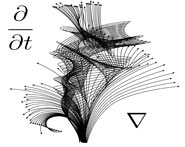


 تاريخ الرياضيات
تاريخ الرياضيات
 الرياضيات في الحضارات المختلفة
الرياضيات في الحضارات المختلفة 
 الرياضيات المتقطعة
الرياضيات المتقطعة
 الجبر
الجبر
 الهندسة
الهندسة 
 المعادلات التفاضلية و التكاملية
المعادلات التفاضلية و التكاملية 
 التحليل
التحليل
 علماء الرياضيات
علماء الرياضيات |
Read More
Date: 1-1-2021
Date: 26-4-2020
Date: 6-4-2020
|
The Gelfond-Schneider constant is sometimes known as the Hilbert number.
Flannery and Flannery (2000, p. 35) define a Hilbert number as a positive integer of the form  (i.e., a positive integer
(i.e., a positive integer  such that
such that  ). The first few are then 1, 5, 9, 13, 17, 21, 25, ... (OEIS A016813). A Hilbert number
). The first few are then 1, 5, 9, 13, 17, 21, 25, ... (OEIS A016813). A Hilbert number  that is not divisible by a smaller Hilbert number (other than 1) is then called a Hilbert prime (or S-prime; Apostol 1976, p. 101); otherwise,
that is not divisible by a smaller Hilbert number (other than 1) is then called a Hilbert prime (or S-prime; Apostol 1976, p. 101); otherwise,  is called a Hilbert composite. The first few Hilbert primes are 5, 9, 13, 17, 21, 29, 33, 37, 41, 49, ... (OEIS A057948), and the first few Hilbert composites are 25, 45, 65, 81, 85, ... (OEIS A054520).
is called a Hilbert composite. The first few Hilbert primes are 5, 9, 13, 17, 21, 29, 33, 37, 41, 49, ... (OEIS A057948), and the first few Hilbert composites are 25, 45, 65, 81, 85, ... (OEIS A054520).
Factorization with respect to Hilbert primes is not necessarily unique, as illustrated by the example
 |
The first few such examples are 441, 693, 1089, 1197, 1449, ... (OEIS A057949).
REFERENCES:
Apostol, T. M. Introduction to Analytic Number Theory. New York: Springer-Verlag, p. 101, 1976.
Flannery, S. and Flannery, D. In Code: A Mathematical Journey. London: Profile Books, 2000.
Sloane, N. J. A. Sequences A016813, A054520, A057948, and A057949 in "The On-Line Encyclopedia of Integer Sequences."



|
|
|
|
حقن الذهب في العين.. تقنية جديدة للحفاظ على البصر ؟!
|
|
|
|
|
|
|
"عراب الذكاء الاصطناعي" يثير القلق برؤيته حول سيطرة التكنولوجيا على البشرية ؟
|
|
|
|
|
|
|
جمعية العميد تعقد اجتماعها الأسبوعي لمناقشة مشاريعها البحثية والعلمية المستقبلية
|
|
|